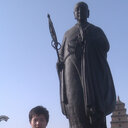Russian
Albanian
Arabic
Armenian
Azerbaijani
Belarusian
Bengali
Bosnian
Catalan
Czech
Danish
Deutsch
Dutch
English
Estonian
Finnish
Français
Greek
Haitian Creole
Hebrew
Hindi
Hungarian
Icelandic
Indonesian
Irish
Italian
Japanese
Korean
Latvian
Lithuanian
Macedonian
Mongolian
Norwegian
Persian
Polish
Portuguese
Romanian
Russian
Serbian
Slovak
Slovenian
Spanish
Swahili
Swedish
Turkish
Ukrainian
Vietnamese
Български
中文(简体)
中文(繁體)
Parasites and Vectors 2019-Nov
Только зарегистрированные пользователи могут переводить статьи
Войти Зарегистрироваться
Ссылка сохраняется в буфер обмена
RESULTS
Increased Tim-3 expression on splenic CD8+ and splenic CD4+, and circulatory CD4+ T cells was associated with a reduction in the proportion of these cells. Furthermore, the levels of interleukin (IL)-2, IL-4, IL-6, IL-22, and interferon (IFN)-γ, but not that of tumor necrosis factor alpha (TNF-α), IL-10, and IL-9, increased to their highest levels at day 4 post-infection and decreased thereafter. Blocking Tim-3 signaling in vitro inhibited lymphocyte apoptosis. Tim-3-Gal-9 signaling blockade in vivo did not protect the mice, but induced the expression of the immunosuppressive molecule, T cell immunoreceptor with Ig and ITIM domains (TIGIT), in Plasmodium berghei ANKA-infected mice.Самая полная база данных о лекарственных травах, подтвержденная наукой
- Работает на 55 языках
- Травяные лекарства, подтвержденные наукой
- Распознавание трав по изображению
- Интерактивная карта GPS - отметьте травы на месте (скоро)
- Прочтите научные публикации, связанные с вашим поиском
- Ищите лекарственные травы по их действию
- Организуйте свои интересы и будьте в курсе новостей исследований, клинических испытаний и патентов
Введите симптом или заболевание и прочтите о травах, которые могут помочь, введите лекарство и узнайте о болезнях и симптомах, против которых оно применяется.
* Вся информация основана на опубликованных научных исследованиях.



